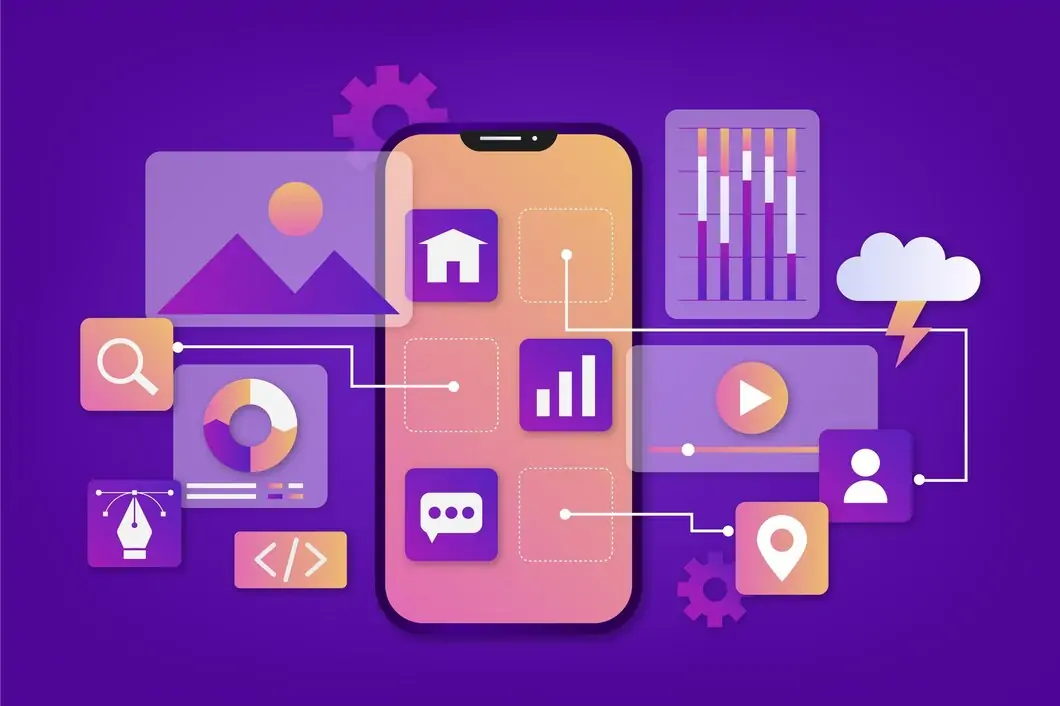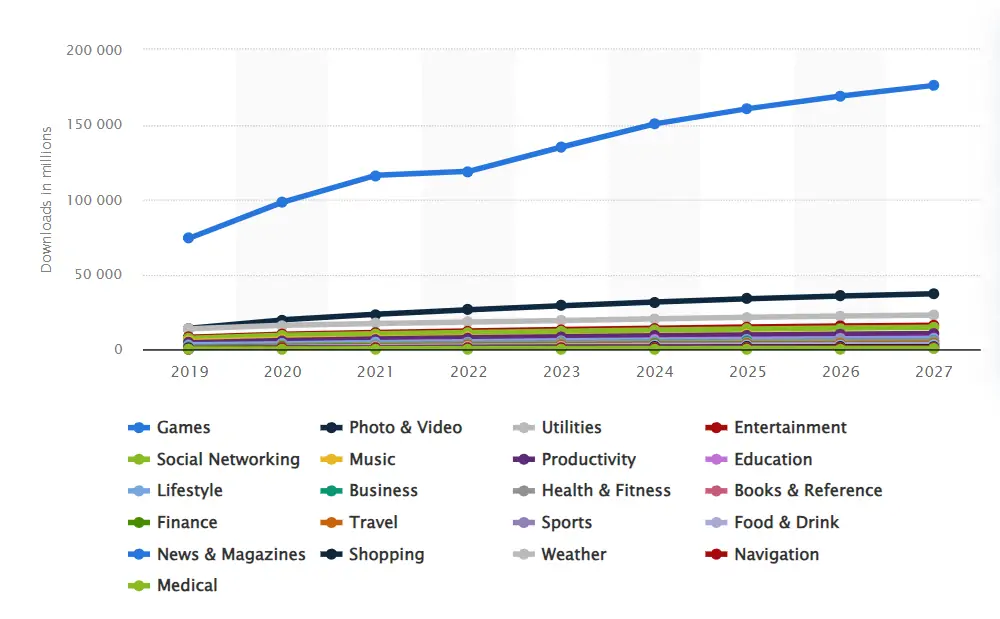
Timeline For Developing Mobile Apps: How Much Time Does It Take To Create An App?
For any entrepreneur looking to make their mark in the digital realm, developing mobile apps is an exciting path. However, “How long does it take to build a mobile app?” is one issue that keeps coming up in their minds. From conception to release, there are several challenges involved in this path. A fully functional app requires careful consideration of a number of aspects, all of which have an overall impact on the app development timeframe.
You should review all the details of your ideal app since you will be spending a significant amount of money on it. Thus, creating a solid mobile app is a reality that contains many complications and difficulties that are best left to the expertise of a top-tier mobile app development firm like Mangosoft.tech.
Conversely, putting a significant amount of work into your project will surely pay off in the form of increased customer happiness and company expansion.
Mobile App Development Timeline
Building a mobile app is an exciting endeavour but also a complex one with many steps. Now, you will walk through the typical mobile app development timeline and the factors that influence its length.
The Mobile App Development Process
Developing apps entails multiple phases, including:
Research and discovery. This first phase focuses on defining app objectives, specifications, competitive analysis, and market research to confirm the app concept. The chart indicates the growth pattern of each category of mobile applications. It is advised to plan for 2-4 weeks for this phase.

UX/UI design. Designing the UX and UI is important for defining how the user will engage with the application. This stage involves wireframing, prototyping, visual design and usability testing. It should take 2 to 6 weeks.
Development and testing. This is the phase where the back end and front end are created, combined and tested for functionality. Teams use the agile approach to develop solutions quickly, test them frequently, and incorporate changes. This is the most intensive phase and typically takes 3-5 months.
Launch and monitoring. The app goes live on selected platforms, such as the iOS and Android stores. After that, analytics monitoring and user feedback contribute to subsequent updates. The plan should be for 1-2 months for the launch and monitoring of the campaign.
Factors Impacting Development Timelines
Many key factors influence the timeline for app development, including:
App complexity. A simple, content-focused app may take 3-6 months, while complex apps with advanced functionality can take 6-12 months. Unique features like AI, AR, 3D graphics, or data integration add development and QA time.
Custom vs off-the-shelf solutions. Building with established frameworks like React Native or Flutter can accelerate development compared to highly custom codebases. However, custom builds allow for more flexibility and innovation.
App integrations. If the app connects to external systems like payment gateways, logistics APIs, or enterprise databases, these integrations add complexity to development and testing.
Team size and experience. Larger, seasoned teams of developers, testers, and UX designers can deliver apps faster than small, junior teams. However, large teams have higher coordination costs. An agile team of 2-4 senior developers can develop simple apps efficiently.
Budget. Development budgets dictate timelines to some extent. With ample budgets, you can expand team size, tools, and testing to speed up the process. Low budgets lead to downsized teams and longer timelines.
Target platforms. Building for just one platform (iOS or Android) is faster than cross-platform app development. Also, iOS apps generally take less time because Android ecosystem fragmentation leads to more device testing.
App maintenance. Post-launch app maintenance, such as fixing bugs, adding features, and updating designs, continues the development cycle. Build in 20% overhead for ongoing maintenance.
How to Speed Up App Development?
Time-to-market is a critical success element for organisations due to changing client needs, intense competition, and instability in the tech industry. A three-month delay in product introduction means that your rival may take advantage of first-mover advantages by releasing sooner.
Here’s how to get your product on the market sooner and enjoy all the advantages early.
Focus on Core Functions and Start with an MVP
There’s no point in pursuing all features at once. Your idea may not pan out, thus wasting your development effort and time. Instead, you should prioritise your product features and validate the core functionality.
Using a minimum viable product (MVP) will make choosing the central feature of your solution easier. An MVP is essentially a simplified version of your program with just a few essential functionalities. The feature set must be sufficient to draw in early adopters and get actual user input. If your MVP receives enough feedback, your developers may continue refining the solution and adding nice-to-have features.
Prepare Detailed Documentation
The foundation of a regulated software development process with predictable results is thorough documentation. Software documentation guarantees that all parties involved in a project—developers, investors, and team members—are on the same page and moving in the same direction. As a result, more resources are devoted to producing a high-quality product in a fast and economical way, and less time is wasted synchronising.
Hire a Professional Developer
Another aspect that affects how quickly you can get to market is attracting the proper people. Competent teams often leave behind well-organized, disciplined, and cohesive teamwork. Thus, make sure the people handling your project are specialists.
However, because of the drawn-out recruiting and onboarding procedures, employing internally might impede your growth process. Additionally, your posts could not even be filled, given the growing skill shortage. Alternatively, you may contract out the whole development process to a mobile app development business that has teams that are prepared and access to a wider talent pool.
Follow the Agile Approach
According to the State of Agile report, 64% of companies have adopted Agile to accelerate software delivery. The same proportion of participants said that this strategy had accelerated delivery.
The Agile philosophy’s cornerstones—sprint planning, customer interaction, and cross-functional teams—make it perfect for quick and high-quality release cycles. Throughout the development lifecycle, an agile app development team makes adjustments based on user input. The development process moves more quickly when an Agile-focused team regularly creates and tests app capabilities.
Conclusion
To recap, the mobile app development timeline spans 5-12+ months, depending on app complexity, team size, budget, tools, and delivery strategies. While accelerating delivery is possible with the right approach, businesses must balance speed with quality assurance. Investing in UX design, scalable architecture, and offshore talent can optimise cycle times without compromising user value. What timeline goals does your app initiative have? With meticulous planning and expert partners, these goals can become a reality.
FAQs
Could You Create an App in Three Months?
It’s true that you can create a basic app in three months, such as a mobile arcade game, a culinary app, or a painting app. Alternatively, you might create an under-8 screen, 3-5 feature MVP app for a more complicated application. Consider a straightforward app for money transfers, fitness tracking, or booking vacations.
How Many Hours Does an Application’s Development Take?
A project involving many individuals, including business analysts, product owners, UX/UI designers, frontend and backend developers, and QA engineers, might take 100 to more than 1,000 man-hours to complete.
How Can the Time It Takes to Build a Mobile App Be Shortened?
Reasonable development and marketing tactics must be used to reduce the time needed to produce an app. Some strategies to shorten the app development duration include staff augmentation, cross-platform app solutions, and MVP development.



